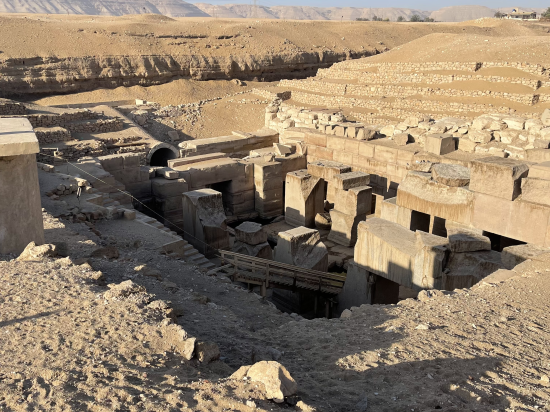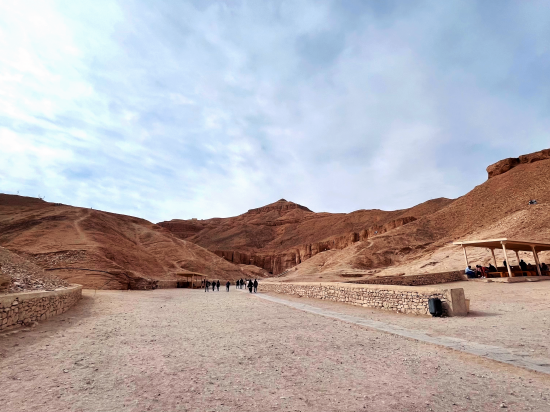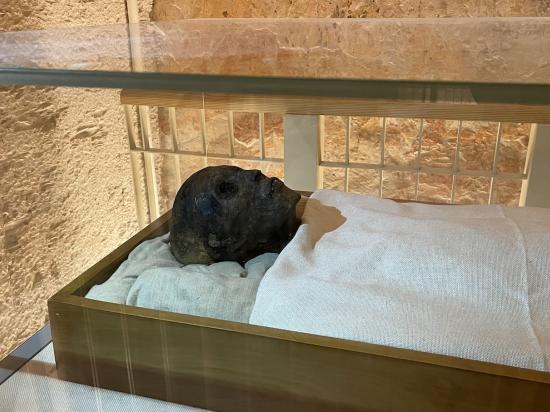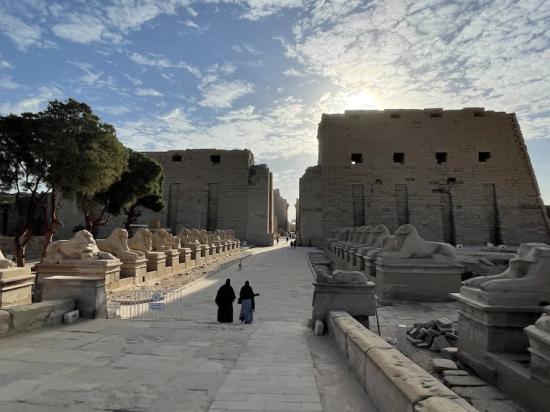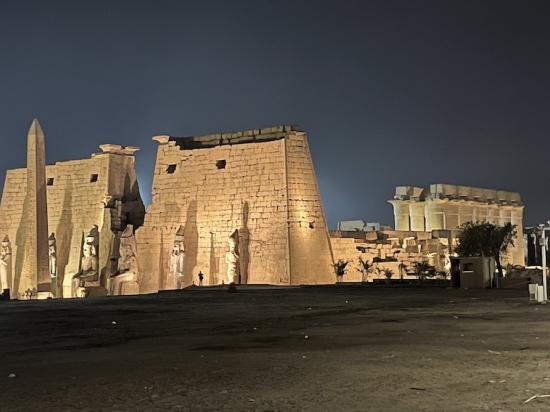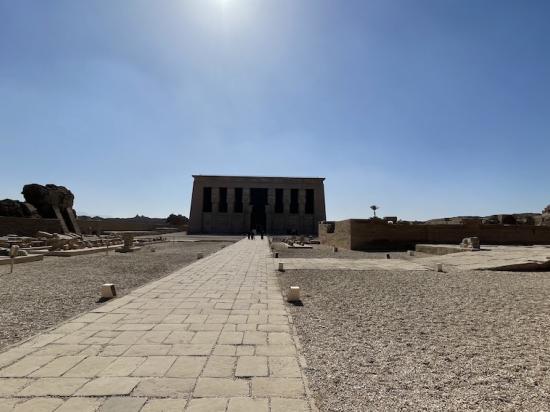The Great Temple of Abydos
The Great Temple of Abydos is an ancient temple complex located in the city of Abydos in Upper Egypt, first described by Flinders Petrie, a pioneer in Egyptology.
The temple was built in honor of the god Osiris, who was the god of the afterlife, and it was a major pilgrimage site for ancient Egyptians.
The temple was originally built in the New Kingdom period, around the 16th century BC, but it was later expanded and renovated by several pharaohs over the centuries. The temple was an important religious center and was closely associated with the cult of Osiris, who was believed to be buried in the nearby desert.
The temple complex is notable for its impressive architecture and intricate decoration. The temple's main entrance is marked by a massive gate, known as the Gate of Seti I, which is adorned with intricate carvings and hieroglyphics. The temple also features several large courtyards, a hypostyle hall with massive columns, and several smaller chapels and sanctuaries.
The Great Temple of Abydos is also famous for the Abydos King List, which is a list of the names of 76 pharaohs. The list is carved on the wall of the Great Temple of Abydos and is one of the most important sources of information about early Egyptian history.
The Abydos King List is believed to have been created during the reign of Seti I, who was a pharaoh of the New Kingdom period. However, the list itself includes the names of pharaohs from the First and Second Dynasties, which spanned a period of over 500 years.
The list is divided into two sections, with the first section listing the names of 34 pharaohs from the First Dynasty and the second section listing the names of 42 pharaohs from the Second Dynasty. The names are listed in chronological order, with the earliest pharaohs listed first and the later pharaohs listed last.
The Abydos King List is important because it provides valuable information about the early history of ancient Egypt, including the names of many pharaohs who were previously unknown. The list also provides insight into the political and social changes that occurred during the early dynastic period, as well as the evolution of Egyptian religion and culture.

In addition to the Abydos King List, there are several other similar lists of pharaohs that have been discovered throughout Egypt. These lists include the Karnak King List, which is located in the Temple of Karnak in Luxor, and the Saqqara King List, which is located in the necropolis of Saqqara near Cairo.
There is a popular theory that suggests the presence of UFO-related hieroglyphs in the Temple of Abydos. However, it is important to note that this theory is not supported by mainstream Egyptologists or scholars.

The hieroglyph in question is known as the "Helicopter Hieroglyph" and it appears to depict a flying object resembling a helicopter. There are also other hieroglyphs in the same area that some people interpret as depicting other modern objects such as airplanes and submarines.

However, it is important to note that these interpretations are largely based on subjective interpretations of the hieroglyphs and are not supported by any archaeological or historical evidence. Mainstream scholars argue that the so-called "UFO hieroglyphs" are simply a result of ancient Egyptians using a technique called "repetition" in their art, where multiple images are drawn to represent the same object in a stylized form.

Additionally, the idea of ancient Egyptians having knowledge of advanced technology such as helicopters and airplanes is not supported by any other historical or archaeological evidence. While ancient Egyptians were certainly skilled in many areas, including engineering and architecture, there is no evidence to suggest that they possessed the knowledge or technology to build advanced flying machines.

In summary, while there are hieroglyphs in the Temple of Abydos that some people interpret as depicting modern flying objects, these interpretations are not supported by mainstream scholarship or archaeological evidence. The most likely explanation is that these hieroglyphs were simply a product of the ancient Egyptians' artistic style and do not represent evidence of advanced technology or contact with extraterrestrial civilizations.



